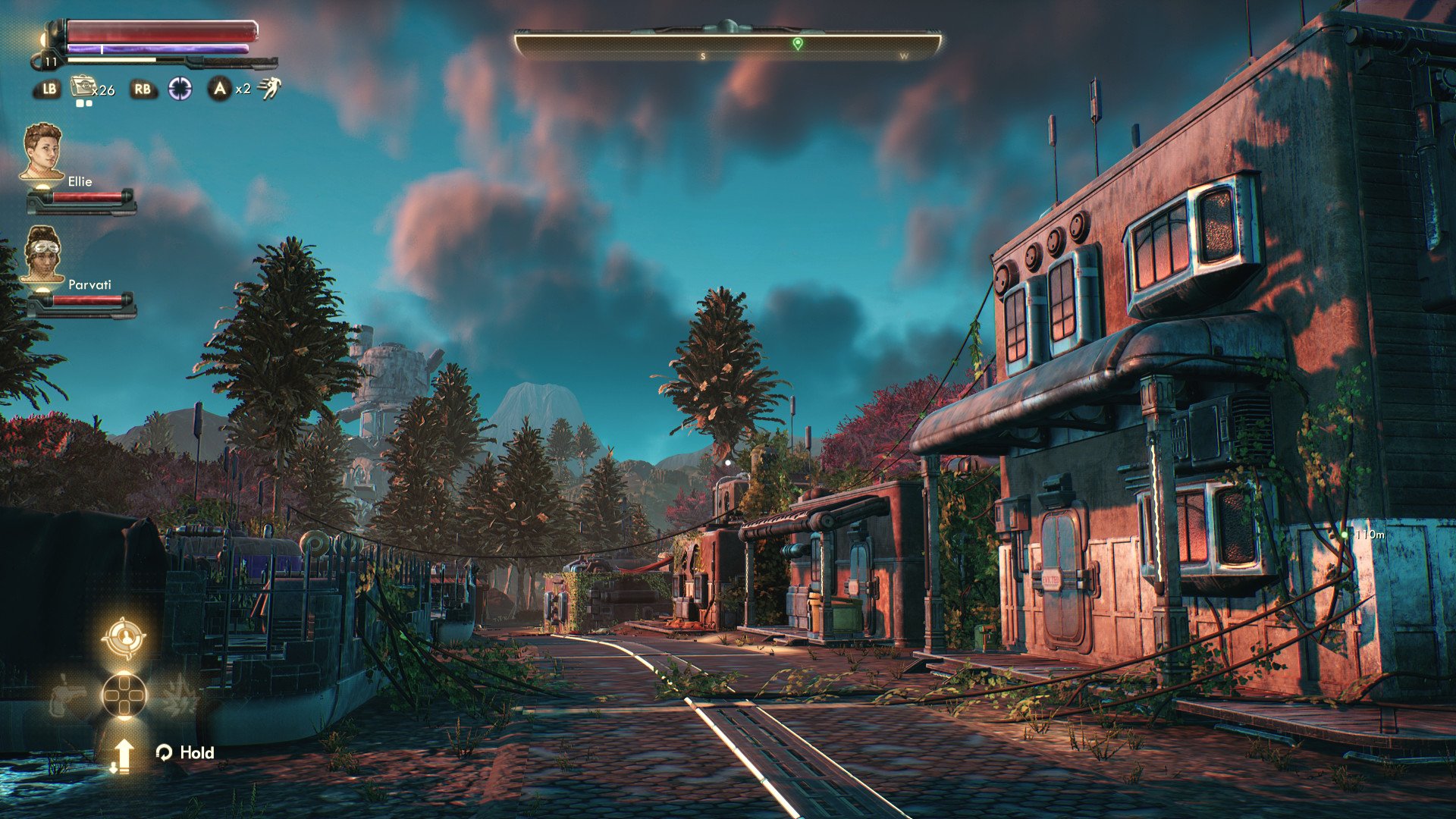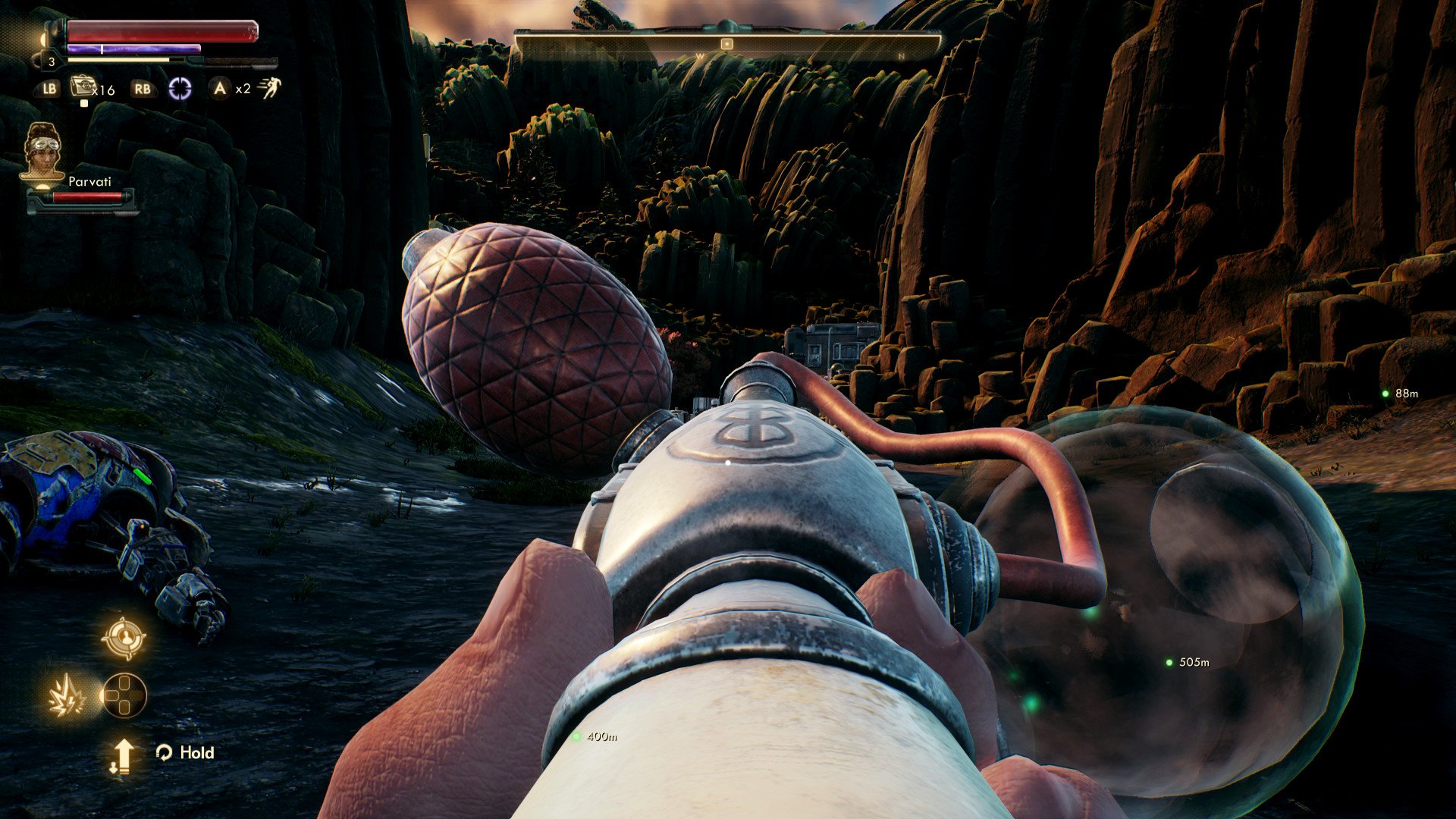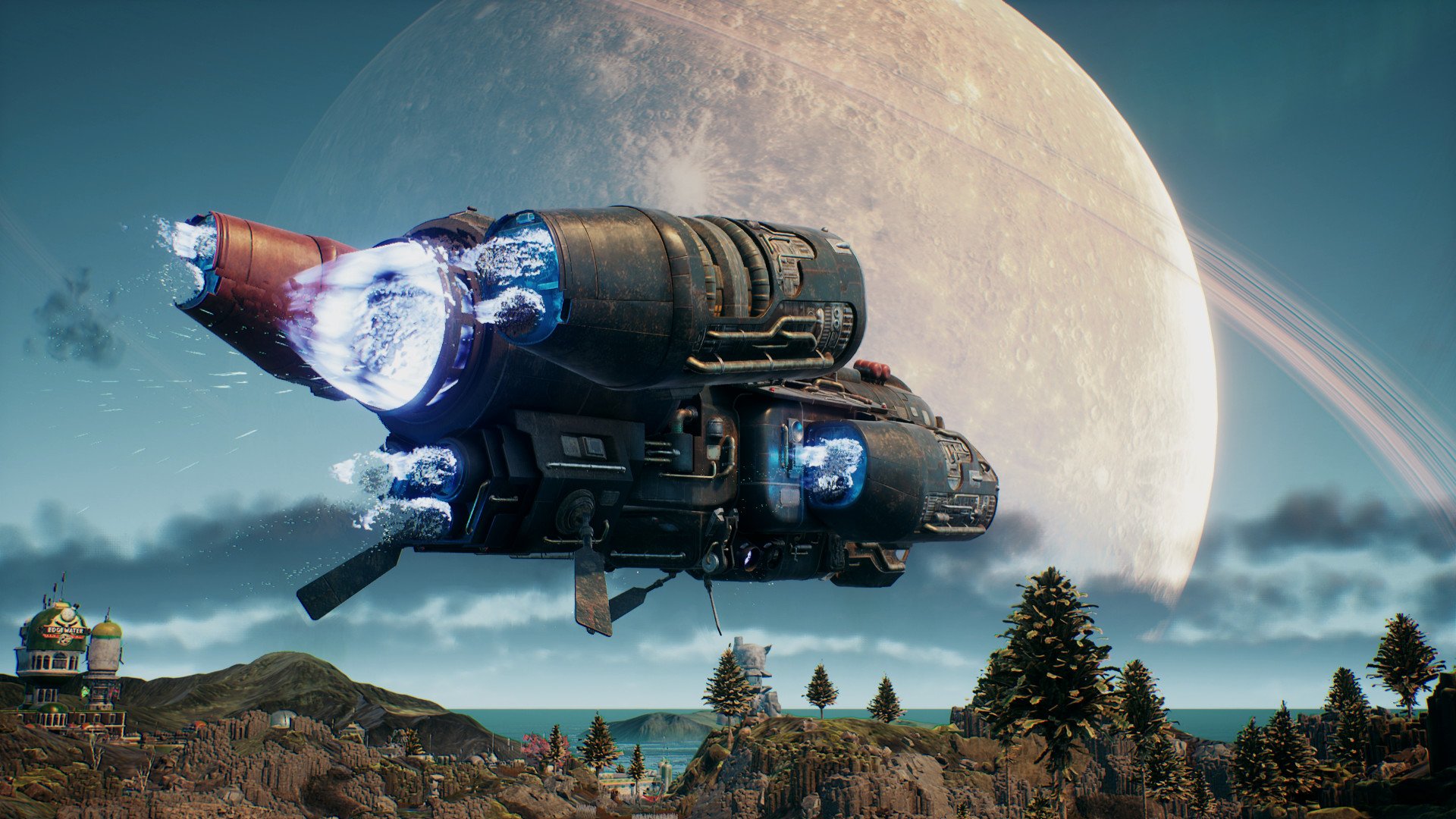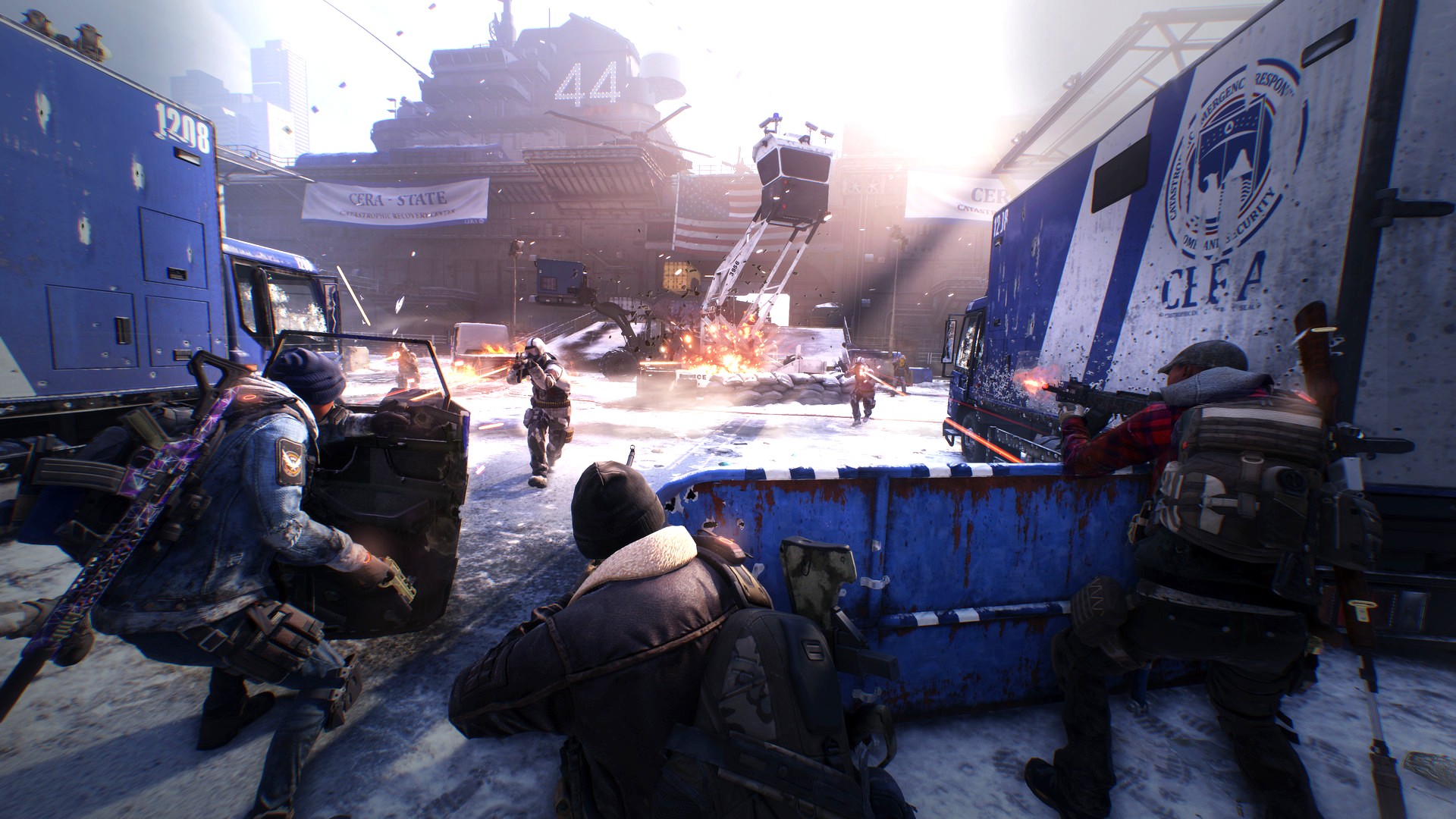The Outer Worlds beginner's guide: 5 must-know tips before take off
The Outer Worlds is a vast and deceptively complex game, so I thought I'd write up some tips and tricks I wish I'd known before I leaped in.

The Outer Worlds is fantastic. In our review, we called it an instant classic, praising its world-building and modernized RPG shooter combat. The Outer Worlds has a depth that few publishers are willing to approach these days, with deep RPG mechanics and nuances that aren't always obvious in the game's UI.
Here are five areas worth paying attention to before taking off for The Outer Worlds. And before we get started, perhaps the most important tip of all is: read the tutorial messages!
The Outer World launches on Xbox One, PS4, and PC on October 25, 2019. It's also day one in Xbox Game Pass for both consoles and Windows PCs.
Related: The Outer Worlds Review
You are what you eat (and carry)
The Outer Worlds' capitalistic hell is beset with dozens upon dozens of types of food, drinks, and drugs. Keeping track of which-brand-does-what can be tough, especially since some of them can have powerful adverse effects.
Early on in the game, I found that I was moving slowly, and my health was no longer regenerating. It turns out that the negative effects from the drug Adrena-Time stacked up to three, giving me a nasty, permanent debuff that wouldn't go away until I'd slept in a bed. Before you imbibe, be sure to check the effects of each item in your inventory screen.
It's also worth noting that, unless you take extra carrying capacity perks, stacks of food can weigh down your inventory space. I wondered how I'd managed to accumulate maximum encumbrance so easily, turns out 60 piles of alien meat weighs quite a bit. Who knew?
All the latest news, reviews, and guides for Windows and Xbox diehards.
Inhaler system loading
If, like me, you missed this during the opening, the Inhaler system is how you'll be healing yourself in The Outer Worlds. With a high enough medical skill, you can load up to four items into the Inhaler for an instantaneous drug boost.
It always uses Adreno by default, which is the game's basic health kit. If you load it up with food, drugs like cigarettes for improved aiming, and other buffs, it becomes a potent power up for use in combat. This has to be done via the inventory menu, which is a bit tedious, but it's a cornerstone of combat, especially on the higher difficulties.
Upgrades, repairing, and tinkering
If you put 20 points into engineering or have a companion with engineering capabilities, you'll unlock the ability to "tinker" with weapons and armor. Tinkering allows you to increase the level of an item, effectively, increasing its damage or defensive properties.
While out in the field, you'll get weapons and armor that are appropriate to your level, but some of the game's more unique named weapons, armor, and "Science" weapons will remain at the level you found them at unless you tinker them up.
If you find your weapons doing ridiculously inadequate amounts of damage, it may be one of the following problems:
- The enemies are strong against that particular weapon (for example, robots take more damage from electrical weapons than regular bullets).
- The weapon is damaged and must be repaired at a workbench (or in the field, if you have the skill).
- The weapon is far lower level than the enemies you're trying to fight.
- You can also augment some weapons and armor with mods to increase their potency.
- Check the effective range. Shotguns in The Outer Worlds, for example, basically want you to be inside the monster to deal damage.
Using Time Dilation while aiming and standing still will allow you to scope out enemy weaknesses and proficiencies, which leads us to our next section.
Combat tips
Time Dilation: The most important piece of your combat arsenal (besides having properly upgraded weapons and armor), is the Time Dilation ability, represented by a purple bar beneath your health pool.
While using Time Dilation, time will slow down to a crawl when you're standing still, giving you the chance to scan an enemy target's level, weaknesses, and some humorous flavor text about them. Once you begin moving or take a shot, it'll drain rapidly, so pick your attacks carefully. Hitting enemies in the head will "blind" them, lowering accuracy. An arm shot can make them drop weapons, and leg shots will cripple them, and make them limp. The effect of a body shot will depend on your weapon. Shotguns knock enemies down, while pistols can produce bleeds, and so on.
You can regenerate Time Dilation using drugs and other consumables, as well as using skills.
Companion Skills: If you put 20 points into leadership (and you most definitely should), you'll unlock companion abilities. These differ based on who you have in the party with you and can be very powerful if used properly.
They are represented on screen in the bottom left corner, on the d-pad if you're on a console. You can examine their effects on the companion screen on the main menu. SAM's ability produces an area of effect stun, while Vicar Max's is a close-range shotgun blast that generates a guaranteed knockdown. These can be great for interrupting enemies, pushing enemies away from you, or finishing off an enemy that has slipped out of your line of sight.
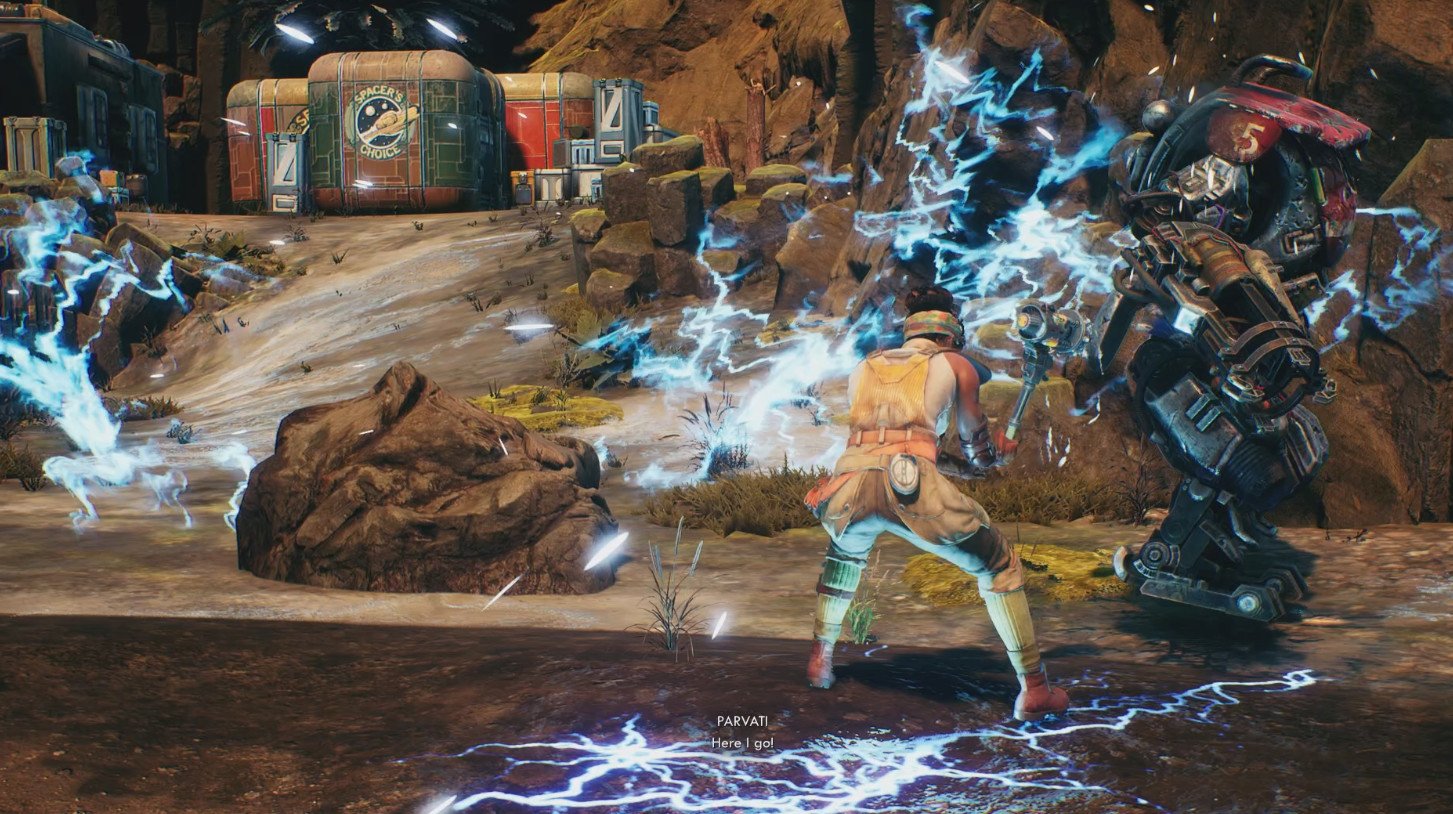
Dashing, melee, and dodging: Enemies will leash if you run far enough away from them on the larger, open-world areas. This can be useful if you've bitten off more than you can chew, aggroing a pack of wild canids, for example.
Many enemies telegraph their melee attacks before hitting you, which gives you a chance to utilize the game's dodge ability. If you jump, then strafe left, right, or backward and jump again while in mid-air, you'll perform a dodge that will remove you from harm's way most of the time. This can be useful for getting back into cover more quickly as well.
If you're playing a melee-oriented character, you'll also unlock a forward dash ability, which helps you close gaps on ranged enemies. If you're playing a ranged-oriented character, note that a well-timed weapon bash can stagger a charging enemy.
Recommended difficulty settings
You can change the difficulty settings at any time during play, ramping them up and down to your preferences. Arguably, The Outer Worlds is quite easy even on "hard" difficulty for anyone familiar with first-person shooters. I would recommend that anyone confident in FPS combat should start on hard mode. Normal mode offers a compelling but relatively pedestrian experience. And easy mode should be taken by those who simply want to experience the story in the most speedy way or those who aren't into shooters to any significant degree.
You can save the game at any time through the pause menu, which can be useful for backtracking on a decision or before initiating combat in a difficult fight. Where things get more complicated is Supernova difficulty.
Supernova difficulty is the hardest mode offered by The Outer Worlds, and combat-wise, the most fun. In combat in Supernova, you really have to pick and choose your battles, ensure you're fully upgraded, and use stims and other powerups frequently to overcome difficult fights. It should be noted, too, that your companions are subject to perma-death in this mode, so managing their positioning, upgrades, and A.I. presets through the companion menu is an absolute must.
Where Supernova becomes more tedious is in its arguably needless restrictions. In Supernova, you can only save and fast travel to your ship. Considering you can save whenever you want at the ship, wanting to save your progress to turn off the game just adds additional punishing tedium to what would otherwise be a very immersive gameplay mode.
Update October 25, 2019: There is a work-around for Supernova's saving restriction. The simple act of fast travelling to your ship creates an autosave from your current location, which can be used for quick saves in a pinch. Just goes to show that Obsidian didn't think out this mode very well, and should probably be amended.
Supernova can be fun and rewarding, just be aware of the limitations before going for it.
The Outer Worlds is awesome
The Outer Worlds is an instant-classic, and arguably the most promising franchise under the Xbox Game Studios flag with Obsidian now joining the Microsoft family. You can grab the game relatively cheap as part of the Xbox Game Pass, too, on both Xbox One and PC.
Are there any other gameplay tips you'd be interested in hearing about? Hit the comments, let us know.

Jez Corden is the Executive Editor at Windows Central, focusing primarily on all things Xbox and gaming. Jez is known for breaking exclusive news and analysis as relates to the Microsoft ecosystem while being powered by tea. Follow on Twitter (X) and tune in to the XB2 Podcast, all about, you guessed it, Xbox!
